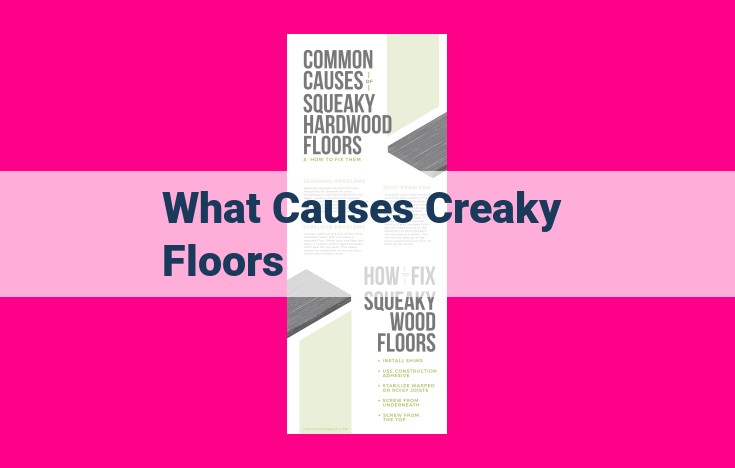Choosing Paint Colors For Homes With Green Roofs: A Guide To Harmony And Contrast

When selecting a paint color for a house with a green roof, consider the architectural style to ensure harmony. Neutrals like cream, white, or gray highlight the roof’s freshness without competing. Earth tones like brown or beige create a natural, cohesive look. For a bold contrast, consider muted blues or warm reds, which complement the green’s vibrancy and add visual interest.
Choosing the Right Architectural Style for Your Home’s Exterior
The architectural style of your home’s exterior plays a crucial role in defining its character and setting the tone for your outdoor space. From traditional to contemporary, the choices are seemingly endless, each with its own distinct features and impact on the overall look of your dwelling.
Traditional Architectural Styles:
Traditional architectural styles embody classic elegance and timeless appeal. Colonial, Georgian, and Victorian styles are characterized by symmetrical lines, ornate moldings, and grand porches. Craftsman homes showcase natural materials such as stone and wood, with simple lines and rustic accents.
Modern Architectural Styles:
Modern architectural styles embrace clean lines, open spaces, and minimalist design. Contemporary homes feature asymmetrical shapes, large windows, and flat roofs. Mid-century modern homes exude retro charm with geometric patterns, expansive decks, and indoor-outdoor flow.
Choosing a Style that Suits Your Taste:
Selecting the right architectural style for your home depends on your personal preferences and the character of your neighborhood. Consider the surrounding homes and landscape to ensure your home blends harmoniously with its surroundings. Research different styles and visit model homes to experience the full impact of each one before making a decision.
The Architectural Style’s Impact on Exterior Design:
The architectural style you choose will influence the entire exterior design of your home. It will determine the type of materials you use, the color palette, and the overall ambiance you create. By carefully selecting an architectural style that reflects your personality and vision, you can create a home exterior that is not only beautiful but also timeless.
Selecting a Color Palette: Enhancing Exterior Appeal
When embarking on the adventure of designing your home’s exterior, color plays a pivotal role in shaping its aesthetic identity. The vibrant hues and subtle shades you choose can either harmoniously complement the architectural style or create a jarring disconnect.
To achieve a cohesive and visually pleasing exterior, it’s essential to consider the architectural style of your home. For example, classic styles like Victorian and Colonial tend to evoke a sense of grandeur with rich, deep colors like burgundy, navy, or hunter green. Contemporary homes, on the other hand, often favor lighter, more neutral tones like white, beige, or gray, which lend a sleek and modern feel.
Popular color schemes serve as a valuable guide for selecting a harmonious palette. The monochromatic scheme uses shades of a single color, creating a sophisticated and cohesive look. Analogous schemes blend colors adjacent to each other on the color wheel, resulting in a balanced and pleasing effect. For a bolder statement, complementary schemes pair colors that are opposite each other on the wheel, generating high contrast and visual interest.
The impact of the chosen color palette extends beyond mere aesthetics. Dark colors tend to absorb heat, making them suitable for colder climates. Lighter colors reflect heat, keeping homes cooler in warmer regions. Additionally, darker hues can make a home appear smaller, while lighter shades create an illusion of space and openness.
By carefully considering the architectural style, popular color schemes, and the impact of color, you can craft an exterior color palette that transforms your home into a visual masterpiece. Embrace the power of color to enhance its appeal and create a living space that reflects your personal style and evokes a sense of harmony and beauty.
Choosing Exterior Materials for Durability and Aesthetics
When it comes to selecting the right exterior materials for your home, it’s crucial to consider both durability and aesthetics. Different materials offer varying pros and cons, catering to specific needs and design preferences.
Paint: Versatility, Customization, and Affordability
Paint is a prevalent choice due to its versatility. It allows you to customize your home with an endless array of colors and finishes. From timeless neutrals to bold accents, the options are limitless. Moreover, paint is cost-effective, making it a budget-friendly option.
Siding: Durability, Low Maintenance, and Variety
Siding is renowned for its durability. Made from materials like vinyl, fiber cement, or aluminum, it withstands harsh weather conditions and requires minimal maintenance. Siding also offers a wide range of aesthetic possibilities, mimicking the look of wood, stone, or other textures. It can enhance the architectural style of your home and add a touch of elegance.
Trim: Accents, Definition, and Detailing
Trim serves as a defining accent for your home’s exterior. Window and door trims frame these openings, adding definition and enhancing their visual appeal. Made from materials like wood, vinyl, or fiber cement, trim provides a contrasting element that complements the siding and paint colors.
Choosing the Right Material for Your Home
The ideal exterior material for your home depends on your specific needs. For durability and low maintenance, siding is an excellent option. If you prioritize versatility and affordability, paint is a great choice. And for adding detail and style, trim is essential.
By carefully considering the durability, maintenance, and aesthetic value of different materials, you can choose the exterior finishes that will protect your home and enhance its beauty for years to come.
Landscaping: Enhancing Your Exterior’s Visual Appeal and Creating a Cohesive Outdoor Space
Landscaping plays a crucial role in complementing the exterior design of your home. It can transform your outdoor space into an extension of your living area, enhancing its visual appeal and creating a harmonious environment that blends seamlessly with your home’s architecture.
Plants and Trees: Adding Color, Texture, and Visual Interest
Incorporating plants and trees into your landscaping can bring a touch of nature and vibrancy to your exterior. Evergreens provide year-round greenery, while flowering plants add pops of color and attract pollinators. Deciduous trees offer shade and privacy during the summer months, while their foliage transforms into a kaleidoscope of colors in the fall.
Hardscaping Elements: Creating Structure and Focal Points
Stone and brick walkways, patios, and retaining walls add structure and definition to your landscaping. These elements can create pathways that guide visitors through your outdoor space and define different areas. *Water features, such as fountains or ponds, add a soothing element and become focal points that draw the eye.
Creating Cohesion Through Design
The key to successful landscaping is to create a cohesive design that flows seamlessly with your home’s architecture. Choose plants and hardscaping elements that complement the colors, textures, and lines of your exterior. Consider the overall scale and proportion of your home, and avoid overcrowding the space with too many different elements.
Benefits of Landscaping
*Enhanced visual appeal and curb appeal
*Improved privacy and outdoor living space
*Increased property value
*Reduced noise and air pollution
*Lower energy costs through shade
Lighting for Ambiance and Security
- Explain the importance of lighting in creating ambiance and ensuring safety. Discuss different lighting fixtures and their placement to highlight architectural features, improve visibility, and deter intruders.
Lighting for Ambiance and Security
Illuminating your home’s exterior not only enhances its aesthetic appeal but also plays a crucial role in ensuring safety and security. When designing your outdoor lighting scheme, consider both its functional and ambient purposes.
Highlighting Architectural Features
Strategic lighting can accentuate the architectural elements of your home, creating a dramatic and captivating effect. For instance, uplighting can cast a soft glow on exterior walls, highlighting intricate details and textures. Recessed lighting can illuminate eaves and soffits, creating a sense of depth and architectural interest.
Improving Visibility
Adequate lighting is essential for safe navigation around your property, especially during the evening and nighttime. Place path lights along walkways and stairs to guide footsteps and prevent accidents. Consider motion-activated lighting near entrances and dark corners to deter intruders and provide a sense of security.
Deterrence from Intruders
Well-lit exteriors can act as a deterrent to potential intruders. Floodlights and security lights can illuminate dark areas, making it more difficult for criminals to approach unnoticed. Motion-activated lighting can also startle intruders and alert you to their presence.
Choosing the Right Fixtures
Select lighting fixtures that complement the architectural style and exterior finish of your home. For instance, traditional homes may benefit from classic lanterns or carriage lights, while modern homes can feature sleek and contemporary fixtures. Consider the brightness, color temperature, and beam spread of the lights to achieve the desired effect.
Placement and Spacing
Plan the placement of your outdoor lighting carefully to maximize its effectiveness. Illuminate high-traffic areas such as walkways and entrances, avoid direct glare into windows, and consider the spillover lighting that may affect neighboring properties.
By combining functional and ambient lighting, you can create an inviting and secure outdoor environment that enhances the beauty of your home and protects your loved ones.
Accessorizing the Exterior: Enhancing Charm and Personality
Decorative Elements with a Purpose
Accessorizing the exterior of your home is not just about adding trinkets; it’s about infusing your home with personality while enhancing its overall aesthetic appeal. Consider incorporating window boxes, planters, and sculptures to create a cohesive and inviting ambiance.
Window Boxes: A Floral Delight
Window boxes are not only practical for growing flowers or herbs but also add a cheerful touch to your facade. Choose boxes that complement the architectural style of your home and plant flowers that bloom in vibrant hues or cascading greenery. They create a sense of warmth and welcome, inviting nature to dance upon your windows.
Planters: Verdant Companions
Place potted plants strategically around your exterior to add visual interest and soften the lines of your home. Choose planters that echo the color palette of your siding or trim, creating a cohesive flow. Consider evergreen shrubs, colorful annuals, or trailing vines to create a lush and inviting outdoor space.
Sculptures: Artistic Expression
Artfully placed sculptures can transform your exterior into an open-air museum. Choose sculptures that resonate with your personal style, whether they are abstract, figurative, or functional. They can act as focal points, drawing attention to architectural details or creating a sense of whimsy and delight.
Accessories that Speak to Your Style
The right accessories can elevate your exterior’s aesthetic, allowing you to express your individuality. Consider adding decorative lighting to highlight architectural features or create a warm and inviting ambiance. Install a trellis to support climbing plants or add a weatherproof bench for tranquil moments amidst nature.
Maintenance with a Touch of Love
Just as you care for the interior of your home, your exterior accessories require regular attention. Clean window boxes, trim plants, and seal sculptures to maintain their beauty and extend their lifespan. By investing in proper maintenance, you ensure that your home’s exterior remains a constant source of joy and pride.
Maintaining the Exterior for Longevity
The Exterior’s Significance
The exterior of your home is not just a facade; it’s a representation of your taste, personality, and the place you call home. Its aesthetic appeal and longevity are vital not only for your enjoyment but also for your property’s value. Regular maintenance is the key to preserving the exterior’s condition and preventing costly repairs in the future.
Cleaning: A Foundation for Protection
Just as a clean canvas is essential for a beautiful painting, a clean exterior is the basis for a well-maintained home. Dirt, dust, and pollution can accumulate, marring the surface and providing a breeding ground for mold and mildew. Regular cleaning removes these contaminants, protecting the exterior from damage and enhancing its appearance.
Repainting: A Fresh Coat for Vibrancy
Over time, paint weathers, fading and chipping. A fresh coat of paint not only rejuvenates the exterior’s appearance but also creates a protective barrier against the elements. Choose high-quality paint and apply it properly to ensure durability and aesthetic appeal for years to come.
Sealing: A Shield Against the Elements
Sealing is the final step in the exterior maintenance process, adding an extra layer of protection against moisture, UV rays, and other environmental factors. Sealants penetrate the surface, creating a waterproof barrier that prevents water from seeping in and causing damage. Regular sealing prolongs the life of the exterior and maintains its beauty.
By following these maintenance steps, you can ensure the longevity and beauty of your home’s exterior. Regular cleaning, repainting, and sealing are investments that will pay off in the long run, preserving your property’s value, providing peace of mind, and allowing you to enjoy your home’s exterior in all its glory for years to come.





